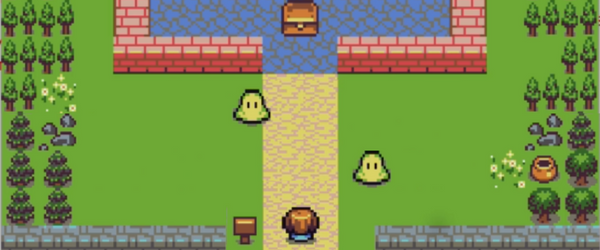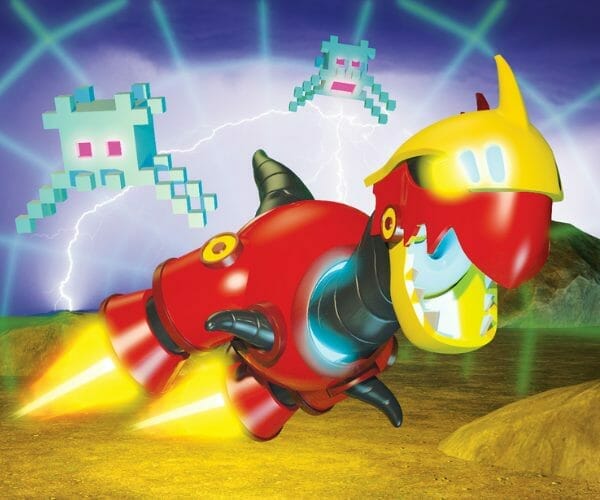Discover the power of Pygame’s
collidepoint
function! As an aspiring game developer, enhancing your toolkit is always a priority – and Pygame, one of Python’s dedicated game libraries, is a treasure trove of functions to explore. Join us today as we dive into the specifics of the exciting
collidepoint
function.
Table of contents
What is collidepoint in Pygame?
A key entity in game development, the
collidepoint
function checks if a point is inside a rectangle. It’s a part of the robust Pygame library, a set of Python modules designed for writing video games.
Why should I learn this?
Learning how to harness the power of
collidepoint
can really level up your game creation skills. It allows you to create more interactive gameplay and opens the door to a host of advanced functionalities like hit detection to add depth to your game projects. Examples abound in game design, from a mouse click triggering an event to an enemy character hitting a trap.
Understanding
collidepoint
and the concept of collision detection can make your game project more immersive and engaging. Plus, it’s fun! Nothing beats the joy of watching your creation interact dynamically with user input and game environment. Stay with us, and you’ll soon be integrating
collidepoint
function into your games.
So, ready to add a new skill to your game development repertoire? Venture forth into the world of Pygame and Python gaming with
collidepoint
!
Working with the collidepoint function
To understand the
collidepoint
function better, let’s start with a basic Pygame setup where we initialize the game and define a game window:
import pygame pygame.init() win_width, win_height = 500, 500 win = pygame.display.set_mode((win_width, win_height))
Creating a Rectangle object
Now, let’s create a rectangle which
collidepoint
method can be applied to. In Pygame, a rectangle is created using
pygame.draw.rect()
:
color = (255, 255, 255) rect = pygame.rect.Rect((250, 250), (100, 60)) pygame.draw.rect(win, color, rect) pygame.display.update()
Using the collidepoint function
The
collidepoint
function in Pygame takes two arguments that represent the x and y coordinates of a point. Let’s use this function to check if a point lies within the rectangle:
result = rect.collidepoint(255, 255) print(result) # This will print 1 if the point is inside the rectangle and 0 if it isn't
Let’s create a function that will use the
collidepoint
function to determine whether a mouse click event has occurred within the rectangle:
def check_click(event):
if event.type == pygame.MOUSEBUTTONDOWN:
if rect.collidepoint(pygame.mouse.get_pos()):
print('Rectangle clicked!')In this function, we first check if a mouse button down event has occurred. If the event has occurred, we then use the
collidepoint
function to check if the location of the click (retrieved with
pygame.mouse.get_pos()
) lies within the rectangle.
Putting it all together
Now, let’s combine all of these elements in the context of a simple Pygame application. In this application, we’ll draw a rectangle to the window and then print a message to the console whenever the rectangle is clicked:
import pygame
pygame.init()
win = pygame.display.set_mode((500, 500))
def check_click(event):
if event.type == pygame.MOUSEBUTTONDOWN:
if rect.collidepoint(pygame.mouse.get_pos()):
print('Rectangle clicked!')
color = (255, 255, 255)
rect = pygame.rect.Rect((250, 250), (100, 60))
running = True
while running:
for event in pygame.event.get():
if event.type == pygame.QUIT:
running = False
check_click(event)
win.fill((0, 0, 0))
pygame.draw.rect(win, color, rect)
pygame.display.update()
pygame.quit()There we have it – a simple application showcasing the
collidepoint
function in action! You can now start bringing interactivity to your games with collision detection.
Extending collidepoint Usage
Let’s take a step further and explore more examples illustrating the versatility of
collidepoint
.
Moving The Rectangle
How about moving the rectangle around the screen while checking for
collidepoint
events? We modify our
check_click
function to move the rectangle to the position of the mouse click:
def check_click(event):
if event.type == pygame.MOUSEBUTTONDOWN:
if rect.collidepoint(pygame.mouse.get_pos()):
print('Rectangle clicked!')
rect.center = pygame.mouse.get_pos()Now, when you click on the rectangle, it will move to the new mouse click location.
Using Collidepoint with Multiple Rectangles
You can use
collidepoint
with multiple rectangle objects for more complex scenarios. Let’s create more rectangles and check if they’ve been clicked.
rect2 = pygame.rect.Rect((100, 100), (100, 60))
rect3 = pygame.rect.Rect((400, 400), (100, 60))
def draw_rects():
pygame.draw.rect(win, color, rect)
pygame.draw.rect(win, color, rect2)
pygame.draw.rect(win, color, rect3)
def check_click(event):
if event.type == pygame.MOUSEBUTTONDOWN:
for r in [rect, rect2, rect3]:
if r.collidepoint(pygame.mouse.get_pos()):
print('Rectangle clicked!')
r.center = pygame.mouse.get_pos()These changes will place three rectangles onto the game window. If you click on one, it will move to the click’s location.
Highlighting Rectangle on Mouse Hover
The
collidepoint
function can also be used to detect whether the mouse is hovering over a rectangle:
def highlight_rect():
if rect.collidepoint(pygame.mouse.get_pos()):
pygame.draw.rect(win, (255, 0, 0), rect)
else:
pygame.draw.rect(win, color, rect)In the above code, the rectangle changes color when the mouse hovers over it. If the mouse leaves the rectangle, it returns to its original color.
Adding these new techniques to your Pygame toolkit, you can start to imagine the possibilities! Whether it’s building complex collision dynamics or just spicing up your user interfaces – Pygame’s
collidepoint
function has it covered.
Implementing a Simple Game with Collidepoint
Let’s put everything together and create a simple game using the
collidepoint
function. Here we’ll design a basic game where you score points by clicking squares that appear randomly around the window.
Setting up the Game
We start by initializing Pygame, creating a window, and setting up some initial variables:
import pygame import random pygame.init() win = pygame.display.set_mode((500, 500)) WHITE = (255, 255, 255) RED = (255, 0, 0) rect = pygame.rect.Rect((250, 250), (50, 50)) score = 0
Now we have a rectangle positioned at the center of the window and a score initialized to 0. The window’s dimensions are 500 x 500 pixels and the rectangle’s dimensions are 50 x 50 pixels.
Rect Clicking and Scoring
Next, let’s define the logic that increases our score when the rectangle is clicked, and moves the rectangle to a random location:
def check_click(event):
global rect, score
if event.type == pygame.MOUSEBUTTONDOWN:
if rect.collidepoint(pygame.mouse.get_pos()):
print('Rectangle clicked!')
rect.x = random.randint(0, 450)
rect.y = random.randint(0, 450)
score += 1Now, let’s add the code to display the score on the screen, which will require Pygame’s font module:
font = pygame.font.Font(None, 36)
Inside our game loop, we’ll use the font object to draw the score to the window:
text = font.render('Score: ' + str(score), True, WHITE)
win.blit(text, (10, 10))The score is now visible on the screen and updates whenever the rectangle is clicked.
The Game Loop and Rendering
The main game loop will take care of events, drawing, and updates:
running = True
while running:
for event in pygame.event.get():
if event.type == pygame.QUIT:
running = False
check_click(event)
win.fill((0, 0, 0))
pygame.draw.rect(win, WHITE, rect)
text = font.render('Score: ' + str(score), True, WHITE)
win.blit(text, (10, 10))
pygame.display.update()
pygame.quit()As you can tell, the
collidepoint
function is instrumental in creating engaging and interactive applications using Pygame. Its usage extends beyond simple event detection to form the backbone of much more complex interactions in larger game designs. Whether you’re a professional game designer or a beginner cutting your teeth on your first projects,
collidepoint
opens a new level of engagement in your Pygame creations.
Continue Your Curiosity
Your journey doesn’t end here! Harnessing the power of Pygame’s
collidepoint
function is just a glimpse into the vast world of Python game development and programming. However, the world of Python extends far beyond game development, and there’s much more to learn and explore.
At Zenva, we’re committed to helping you expand your programming knowledge and skills. Whether you’re a novice diving into coding basics, or an experienced developer seeking advanced topics, we have over 250 courses designed to cater to your needs. From programming to AI, we got you covered.
If you’re looking to dive deeper and build a solid foundation in Python, we invite you to check out our comprehensive Python Mini-Degree. This collection of courses designed for beginners and advanced learners alike covers a broad array of topics, including algorithms, object-oriented programming, game development, and app development. With step-by-step projects, you’ll learn by doing, all at your own pace.
Are you interested in Python beyond game development? Explore our extensive collection of Python courses for a more diversified learning experience.
Remember, programming is a journey of continuous learning and growth. Keep exploring, keep coding, and let us help you pave your path to becoming a Python programming pro!
Conclusion
Designing games or building practical applications, Pygame’s
collidepoint
function is a valuable asset in your Python toolkit. It opens up a wealth of possibilities, allowing you to make your codes more interactive and user-friendly. The journey in understanding its value and potential, however, is only just beginning.
At Zenva, we’re dedicated to supporting your continuous learning. Interested to dig deeper and refine your Python skills even further? Let’s take the next step together. Our comprehensive Python Mini-Degree not only covers Python essentials but also offers advanced knowledge tailored to your learning path. So what are you waiting for? Start achieving your Python programming goals with us!
Did you come across any errors in this tutorial? Please let us know by completing this form and we’ll look into it!

FINAL DAYS: Unlock coding courses in Unity, Godot, Unreal, Python and more.







